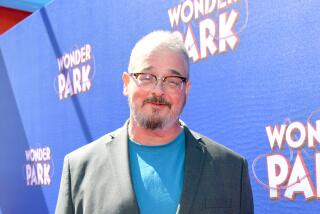Volunteers Help Diabetic Threatened With Blindness
- Share via
Octavio Onofre was going blind in his one good eye. The diabetic gardener from West Los Angeles needed surgery but couldn’t afford it.
On Wednesday, strangers took care of that. A doctor donated his time for the surgery and the hospital waived its fees.
Whether the surgery saved his sight won’t be known for at least a week, maybe months. Chances of success are about 80%.
The outcome will profoundly affect his family, for whom he is the sole breadwinner.
“His wife and mother are both dependents of him,” said Thomas Hanscom, who performed the 90-minute operation, for which he usually charges about $2,000. “Their current lifestyle is also teetering on this surgery.”
An hour before the surgery, Onofre, 47, said that without it, “I’m quite aware of what’s going to happen. That’s why I’m very nervous.”
His family has $100 in a checking account, and Onofre had to stop working a week ago. His wife, Lola, cleans homes for about $60 every other week but must take care of Onofre’s partially blind and diabetic mother as well as him.
Onofre has known for 12 years that he has diabetes. But since he makes only about $15,000 a year and can’t afford insurance, he often has gone without proper medicine. Eventually, he became blind in his left eye.
In 1999, Hanscom also performed surgery on that eye, but it was unsuccessful. However, Hanscom said, the condition of that eye was worse than that of Onofre’s right eye now.
For both surgeries, the Southern California Lions Eye Institute, a nonprofit organization in Santa Monica, agreed to pay part of the hospital costs, normally $6,000 to $7,000. St. John’s Health Center in Santa Monica waived the rest, because the institute donates about $100,000 annually in equipment to St. John’s, said Walt Dixon, the institute’s president.
The problem in Onofre’s right eye started about a year ago, and Hanscom told him he might need surgery in the future.
Onofre continued to work with his one good eye until last Tuesday, when his vision became blurry. He thought it was because he hadn’t put in his eyedrops, he said. But when he awoke the next morning, he could see only vague shapes.
Since then, his condition has deteriorated.
“I’m only able to see light, just a streak of light,” Onofre said.
Today, the doctor will take the patch off Onofre’s eye. For the next few days, images will be distorted. After that, he might have usable vision. The next few months will tell, Hanscom said.
During the surgery, Lola Onofre sat alone in the waiting room. Tears welled as she thought about the future. But the surgery went well, Hanscom said.
“I feel very good about the surgery,” he said. “There were a lot of things that could have gone wrong and didn’t.”
Still, he said, “we don’t know what will happen.”
More to Read
Sign up for Essential California
The most important California stories and recommendations in your inbox every morning.
You may occasionally receive promotional content from the Los Angeles Times.













